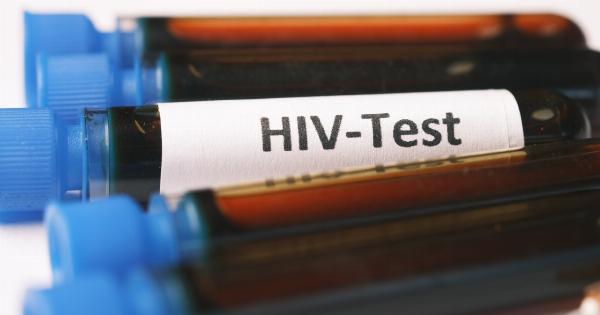Human Immunodeficiency Virus (HIV) is a virus that damages the immune system, making it difficult for the body to fight off infections and diseases.
HIV attacks the white blood cells known as CD4 cells, which are responsible for boosting the immune system. Over time, HIV can lead to Acquired Immunodeficiency Syndrome (AIDS), a condition where the immune system is severely damaged, increasing the risk of life-threatening infections.
HIV is categorized into four stages, each of which can have different symptoms and progression:.
Stage One: Acute HIV Infection
During the first stage, which is also known as acute HIV infection or primary HIV infection, the body’s immune system tries to fight off the virus.
As a result, individuals may experience flu-like symptoms such as fever, headache, sore throat, muscle aches, and swollen lymph nodes. The symptoms usually occur between 2-4 weeks after being exposed to the virus. However, some individuals may not experience any symptoms.
This stage is critical because the virus can quickly spread throughout the body, and HIV can be highly infectious during this time.
Individuals who suspect they have been exposed to the virus should get tested as soon as possible to ensure early detection and treatment.
Stage Two: Clinical Latency
After the acute stage, the virus moves into stage two, which is known as clinical latency or chronic HIV infection. During this stage, the virus is still active but reproduces at a much slower rate than in stage one.
Individuals may not experience any symptoms during this stage, and the virus can remain dormant for several years. However, the virus is still damaging the immune system during this time.
Towards the end of this stage, individuals may begin to develop mild symptoms such as fatigue, weight loss, and swollen lymph nodes. It’s crucial to continue receiving regular HIV tests during this time to ensure early detection and treatment.
AIDS: Stage Three
If left untreated, HIV can advance to the final stage known as AIDS (Acquired Immunodeficiency Syndrome).
At this stage, the immune system is severely damaged, and the individual is at an increased risk of developing life-threatening infections and cancers. Infections such as tuberculosis, pneumonia, and meningitis can also cause complications due to the weakened immune system. Individuals may experience symptoms such as chronic diarrhea, fever, night sweats, and rapid weight loss.
Stage Four: Advanced AIDS
The last stage of HIV is known as advanced AIDS. At this stage, the individual’s immune system is severely damaged, and they are susceptible to numerous opportunistic infections.
Individuals may experience severe and prolonged infections that are resistant to treatment. Symptoms may include severe weight loss, chronic diarrhea, breathing difficulties, and neurological symptoms such as confusion and memory loss.
It’s important to note that with proper treatment, individuals can live with HIV for several years without developing AIDS.
Early detection and treatment are critical to ensuring a good quality of life and preventing the virus from advancing to later stages.
Conclusion
HIV is a serious virus that can lead to several complications if left untreated. Understanding the stages of HIV is crucial in ensuring early detection and treatment.
Routine HIV testing is recommended, especially for individuals who are sexually active or have a history of intravenous drug use. If you suspect you have been exposed to the virus, get tested as soon as possible, and seek medical treatment. With proper treatment, individuals can live with the virus for a long time without developing AIDS.






















